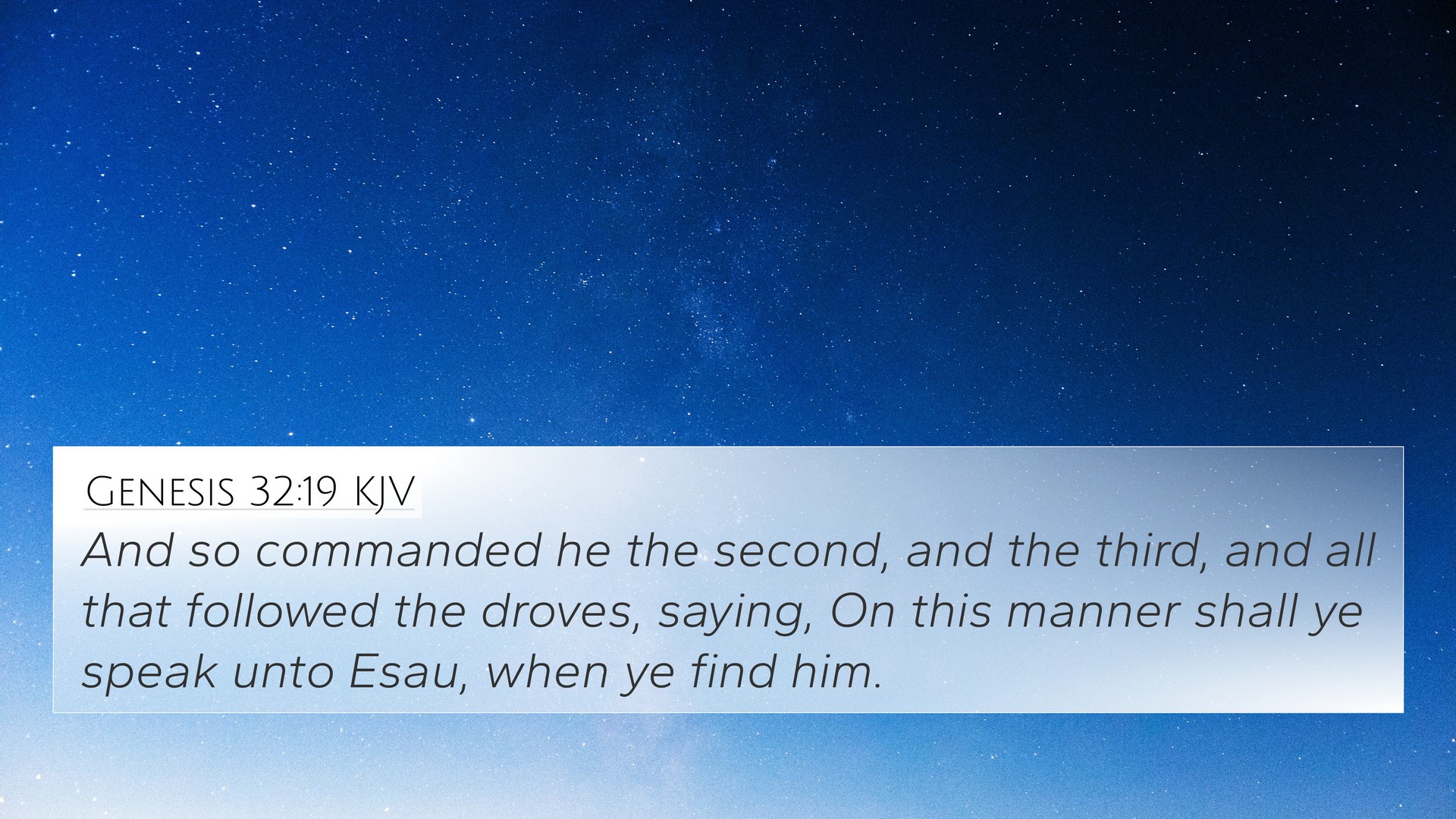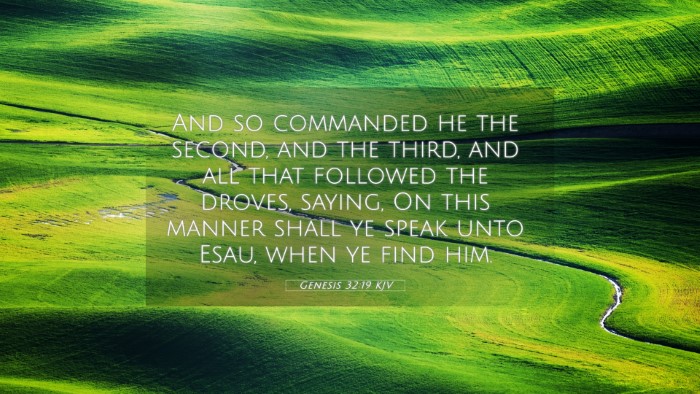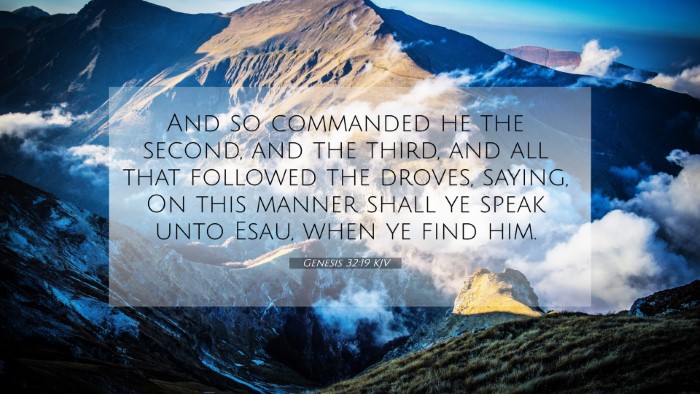Genesis 32:19 states, “And he commanded the foremost, saying, When Esau my brother meeteth thee, and asketh thee, saying, Whose art thou? and whither goest thou? and whose are these before thee?” This verse captures a moment of Jacob’s strategic planning as he prepares to meet his estranged brother, Esau. To understand this verse deeply, we can extract insights from various public domain commentaries, synthesizing their interpretations.
Contextual Overview: Jacob had fled from Esau years prior, fearing for his life due to their family conflict over the birthright and blessing. Now, as he returns to his homeland after years of servitude, he is apprehensive about reuniting with Esau. This verse illustrates Jacob’s efforts to ensure a peaceful encounter.
Insights from Matthew Henry: Matthew Henry emphasizes Jacob’s cautious preparation. Jacob commands his servants to inform Esau about his extensive wealth and the purpose of his return. This reflects a desire for reconciliation and a hope to appease Esau's potential wrath. Henry points out Jacob's reliance on humble, servant-like talk to express his intention for peace rather than conflict.
Albert Barnes’ Commentary: Barnes notes the significance of Jacob’s inquiry regarding Esau’s questions. Each question from Esau highlights an opportunity for Jacob to affirm his intent to restore their relationship. By addressing the past and explaining his current situation, Jacob initiates a dialogue aiming at restoring familial ties. This dialogue is seen as crucial for the shifting dynamics of their relationship.
Adam Clarke’s Commentary: Clarke elaborates on Jacob’s wisdom and prudence in this situation. He sees this verse as an example of Jacob’s ability to navigate dangerous waters with care. Jacob sets the stage for his encounter, demonstrating an understanding of family dynamics. Clarke underscores that proactive approaches to addressing past grievances can lead to fruitful resolutions.
Bible Verse Meanings and Cross-References
Understanding Genesis 32:19 also involves recognizing its connections to other biblical passages. Below are cross-references that provide thematic and narrative parallels:
- Genesis 27:41-42: This passage recounts Esau’s anger and Jacob’s ensuing fear, setting the context for their estrangement.
- Genesis 33:1-4: The actual meeting between Jacob and Esau, demonstrating reconciliation and forgiveness.
- Proverbs 15:1: "A soft answer turneth away wrath," correlating with Jacob's method of addressing Esau to foster peace.
- Matthew 5:23-24: Jesus’ teaching on reconciliation mirrors Jacob’s thoughtful approach to mend relationships.
- James 4:10: “Humble yourselves in the sight of the Lord,” echoing Jacob’s humility in presenting himself to Esau.
- Romans 12:18: "If it be possible, as much as lieth in you, live peaceably with all men," which is a guiding principle reflected in Jacob’s actions.
- Hebrews 12:14: "Follow peace with all men," emphasizing the importance of seeking peace in relationships.
Thematic Connections and Biblical Analysis
This exploration of Genesis 32:19 elucidates how it serves as a pivot between estrangement and reconciliation. The narrative framework is essential in understanding the journey from conflict to harmony. Jacob's strategic planning is paramount in parallel stories within the Bible where similar tensions exist, and resolutions require humility and intentionality.
Inter-Biblical Dialogue
Genesis 32:19 finds resonance with various theological themes throughout the Scriptures:
- The theme of reconciliation can be traced from Jacob and Esau to the parables of Jesus, as seen in the Prodigal Son.
- Leadership and Humility: The narrative underscores characteristics of effective leaders in confronting past wrongs, evident in David’s interactions with Saul (1 Samuel 24).
- Forgiveness: Jacob’s actions reflect the broader biblical principle of seeking forgiveness, as illustrated in Colossians 3:13.
Conclusion
Through Genesis 32:19 and its accompanying insights from various commentaries, we observe a deliberate interplay of concern for relationships, humility, and the importance of strategic communication when addressing past grievances. This scripture opens avenues for comparative Bible verse analysis, illustrating how one passage can speak to and enhance understanding of another, thereby enriching the study of biblical themes related to family, reconciliation, and the complexities of human relationships.
As readers engage with this verse and its cross-references, they are equipped with the tools to explore relational dynamics deeply within the broader narrative of the Bible. This encourages an understanding of how scriptural wisdom can inform our interactions today, paralleling Jacob’s journey toward reconciliation with our contemporary experiences.


